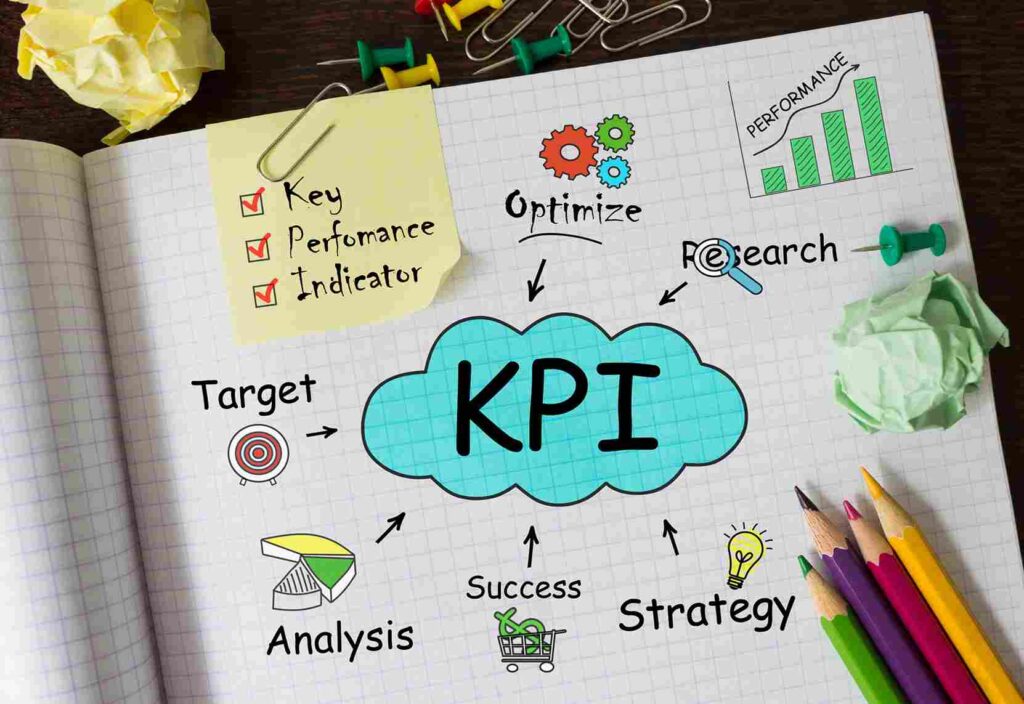- Home
KPI, or Key Performance Indicator, is a vital metric that every organization needs in order to measure progress against strategic objectives. Typically, companies set specific goals aligned with their corporate standards, and KPIs are used to evaluate whether these goals are met, enabling continuous business growth.
Many businesses leverage KPIs across various departments to drive operations in a structured, measurable way. This ensures consistent progress aligned with company standards. So, what exactly is a KPI? What are the different types? Let’s explore in this article.
Table of Contents
Toggle
A KPI, or Key Performance Indicator, is a measurable value used to assess the performance of an organization or an individual against defined objectives. KPIs help in evaluating employee productivity and the overall progress of a business. They serve as a benchmark for performance improvement and help maintain organizational standards.
KPI stands for:
K = Key: Refers to the core goals of the organization—key drivers for business success.
P = Performance: Represents quality and efficiency in operations.
I = Indicator: Acts as a measurable signpost of performance.
Thus, a Key Performance Indicator is essentially a metric that reflects the success level of an organization in achieving its strategic goals.
These are KPIs that offer quantifiable results using actual data, such as numbers and ratios. They are easily verifiable and commonly include indicators like sales revenue, units sold, or the total number of completed projects.
These KPIs rely on qualitative assessment and are often used when numerical data is unavailable. Examples include employee behavior, attitude, soft skills, and overall work performance. Organizations typically develop custom scoring systems for these indicators.
These indicators highlight positive business outcomes aligned with organizational objectives, such as increased profit, higher sales, improved customer satisfaction, or enhanced production quality.
These metrics indicate issues or inefficiencies, such as losses, production errors, products failing quality checks, or a rise in customer complaints. They help in identifying areas for improvement.

To ensure KPIs are effective, they must be accurate, realistic, and suitable for the type of work being measured. Many organizations adopt the SMART KPI framework to establish measurable goals. SMART stands for:
S – Specific: Clearly defined goals
M – Measurable: Quantifiable results
A – Attainable: Goals that are realistically achievable
R – Relevant: Aligned with broader organizational objectives
T – Timely: Time-bound with a clear deadline

The effectiveness of KPIs relies on how they are defined and implemented. A well-defined KPI must be detailed, appropriate, and aligned with realistic goals. Below are the common levels of KPI definitions:
Start by setting clear goals at the company level. This ensures all employees understand the organization’s vision and work toward shared objectives. These KPIs reflect overall success and strategic alignment.
Department KPIs must align with organizational KPIs but differ according to job function. These metrics help assess departmental performance and are tailored to specific team goals.
Personal KPIs are used to evaluate individual employee performance. Since employees drive the company forward, aligning personal goals with job roles is essential for long-term growth.
Secondary KPIs are supplementary indicators that assist in assessing qualitative aspects, especially in non-quantitative departments like HR or administrative roles. However, companies with strong numerical KPIs (e.g., sales volume) may not need them.
1. Helps assess employee performance against expectations
2. Measures progress towards organizational goals
3. Supports decision-making for salary raises and annual bonuses
4. Identifies weaknesses or issues for improvement
5. Aids in strategic business planning
6. Provides a foundation for refining future KPIs
KPIs play a vital role in helping organizations define their strategic direction and align employee efforts with business goals. By integrating KPIs at all levels—from corporate to individual—companies can drive sustainable growth and achieve measurable success.
If your business aims to increase profitability and achieve higher sales through tailored KPI strategies, Asia Search Solutions can be your trusted digital marketing partner. We help businesses meet their KPIs through result-driven strategies like SEO, Facebook Ads, Google Ads, website development, and more.

บริษัท Digital Marketing Agency ที่มีประสิทธิภาพสูงพร้อมให้บริการธุรกิจของคุณด้วยความเป็นมืออาชีพ เพื่อให้แบรนด์ธุรกิจของคุณประสบความสำเร็จกับแคมเปญการตลาดออนไลน์